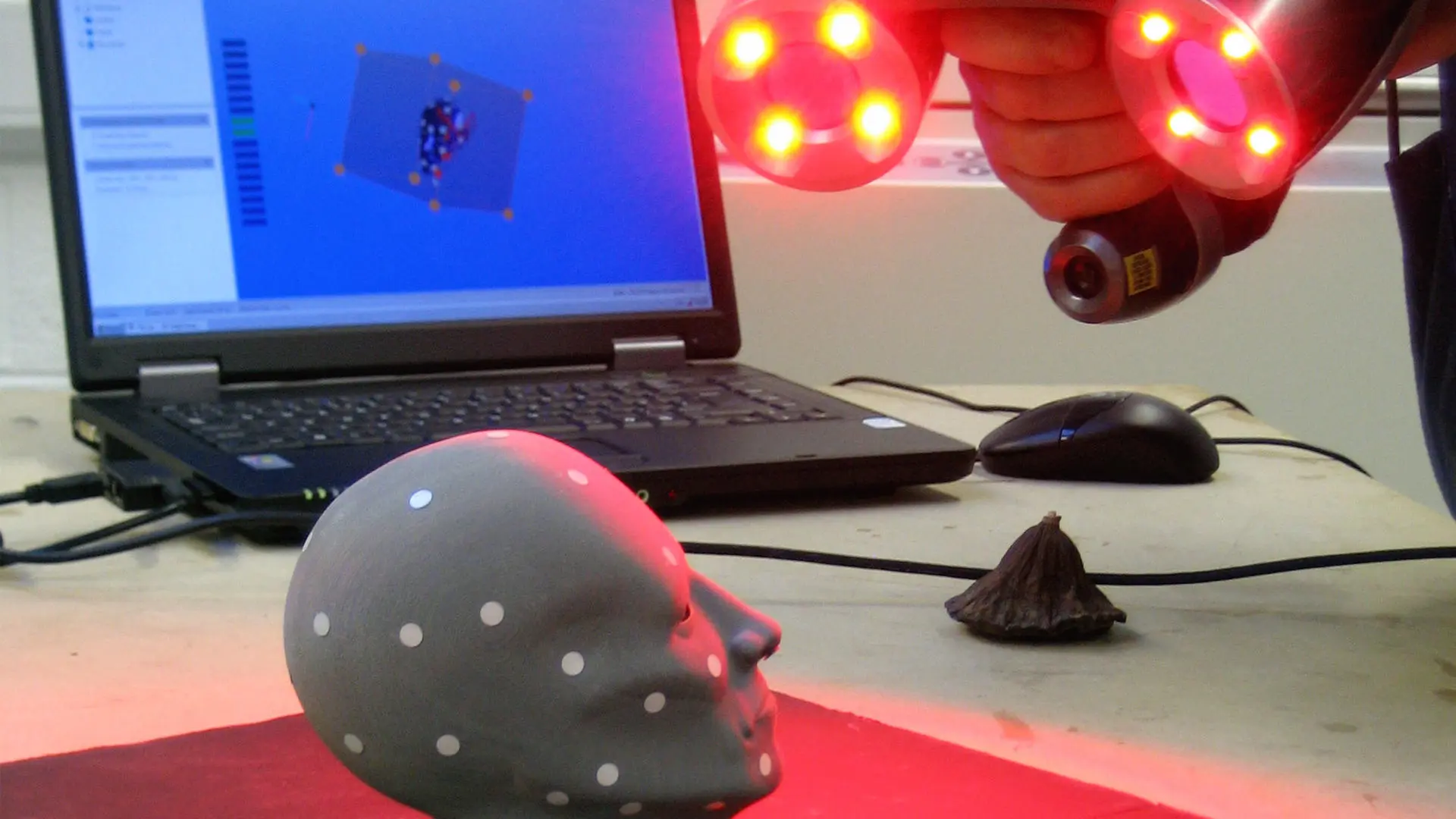3D Scanning
3D scanning is a technique useful to many subject areas.

There are several types of scanners available including Static Scanners for capturing motionless objects and Dynamic Scanners for capturing moving objects. These scanners come in many shapes and sizes including hand-held models for smaller objects, larger portable ‘survey’ type models for room and landscape scanning and fixed room installations for large object/person scanning.
This technology is supported by a university cross-disciplinary 3D imaging group dedicated to promoting the use of 3D technologies and assessing the suitability of using different technologies in a variety of applications.ZScanner 700 (object hand-held type) The Z-Scanner 700 is a truly portable infra-red laser scanner. This self-positioning, real-time surfacing 3D scanner helps Students improve their design throughout the manufacturing process. Connected to a laptop via a single FireWire cable, setup is quick and scanning objects is easy, fast, and accurate. Objects can be Scanned in one single operation and sent to print from the bundled software available with the scanner. The Z-scanner has been used in some tight for space places that none self-positioning have been unable to scan because of their reliance on external positioning targets that must be kept insight.
Artec Eva
The Eva is the suitable for making a quick, textured and accurate 3D model of medium sized objects such as a human bust, an alloy wheel, or a motorcycle exhaust system. It scans quickly, in high resolution and in colour, which allows for a wide range of applications.
Artec Spider
The Spider is suitable for capturing small objects or intricate details of large objects with steadfast accuracy and brilliant colour. This scanner can render complex geometry, sharp edges and thin ribs. It is ideal for scanning objects such as moulding parts, PCBs, keys, coins or even a human ear. The final 3D model can then be exported to CAD software.
FARO Edge and Prime (object flexible arm types)
The FaroArm is a portable coordinate measuring machine (CMM) that allows easy verification of product quality by performing 3D inspections, tool certifications, CAD comparison, dimensional analysis, reverse engineering, and more. The FaroArms both use Polyworks software, Modeler Premium for the Edge and Inspector Standard for the Prime. Both arms share the choice of a magnetic base, granite rolling cart or folding tripod for mounting the arm. FARO Edge - 2.7 metre, 7 axis The addition of the FARO Laser Line Probe to the FaroArm adds unparalleled non-contact 3D scanning capabilities for detailed measurement of surface form, making the ScanArm the perfect combination of a contact and non-contact portable CMM. The type of laser used is particularly suitable for picking up details of highly polished metallic surfaces.
FARO Prime - 1.8 metre, 6 axis
The Prime is the ideal solution for measurements in inspection, reverse engineering, CAD-to-part analysis and for anywhere else a high-accuracy, hard-probing measurement solution is needed.
Faro Focus 3D-S 120 (landscape type)
The Faro 3D Laser Scanner uses infra-red lasers to accurately plot rooms and structures within a 60m radius and has the facility to stitch multiple plots together using targets. It also collects colour photographic images which are superimposed onto the plot in order to create a 3D image. This equipment provides a very useful tool for examining crime scenes as well as historical/prehistoric rooms and landscapes. It has been used extensively by staff and students in our fire investigation department to record experimental fire scenes by Forensic Science researchers. It also has been used by members of the Archaeology department to record the site of a First World War military hospital in a cellar in Auchonvillers in France. This temporary hospital was directly connected to a trench system and still contains graffiti relating to soldiers who were taken there. In addition to the cellar, the museum on site was also scanned with a view to developing an interactive online museum. This 3D scanner has also been used to record a rock art site and nearby cave system in California, and caves in Cumbria and South Africa, a well at a Roman excavation in Ribchester and building fronts as part of an architecture project in Cyprus.
